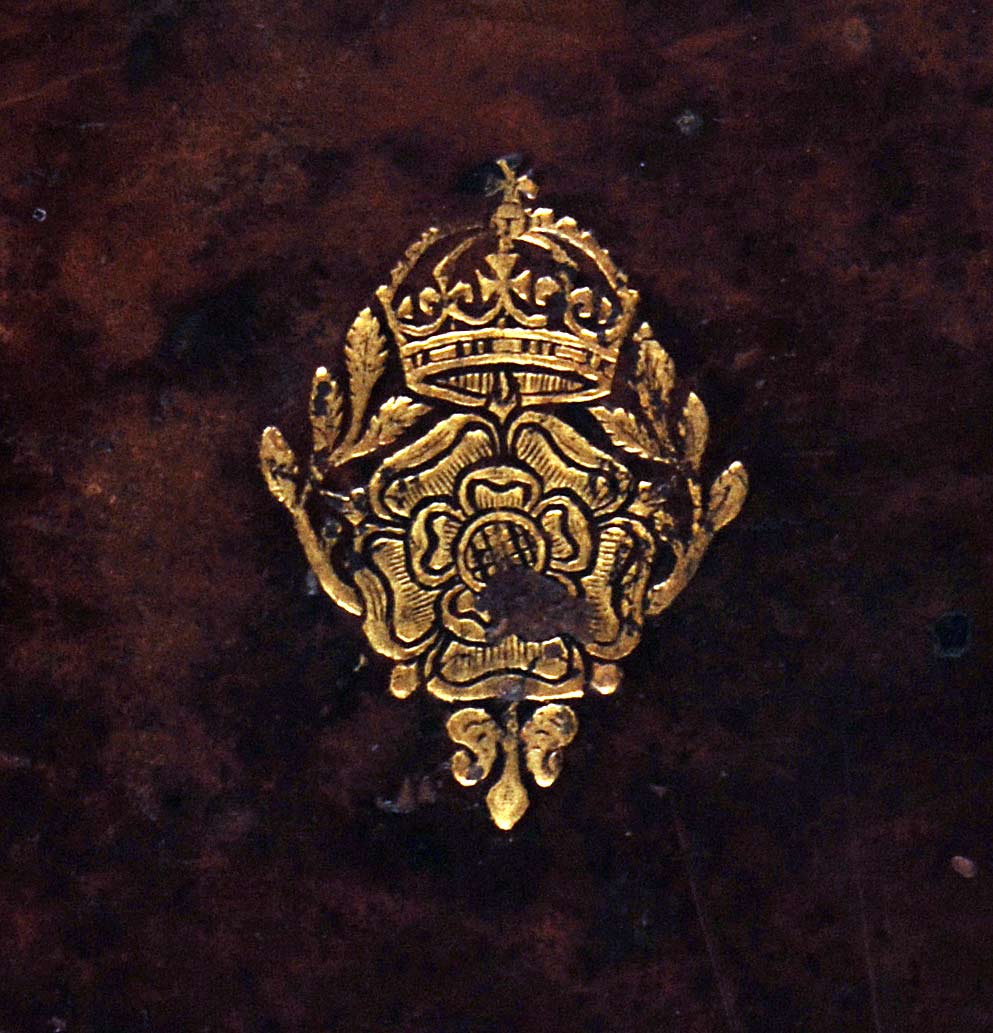
John Boys. An exposition of all the principal Scriptures used in our English liturgie…. London: Imprinted by Felix Kingston, 1610; with the binding stamp of Henry Frederick Stuart, Prince of Wales (1594–1612).
This seventeenth-century commentary on the Scriptures is purportedly from the library of Henry Frederick Stuart, Prince of Wales (1594–1612), the eldest son of James I & IV and Anne of Denmark, and brother to Charles I. Though Henry died at the young age of eighteen, his library was reported to be very extensive. Most of the books from his collection are now housed in the British Library, though some, such as this example, are held by institutions around the world.
The identification of Henry Frederick Stuart as the former owner is based upon the binding stamp, which was not the only pattern used on Henry’s books. According to the binding historian, Mirjam Foot, ‘the fact that there were three different arms blocks and six different corner blocks, all found in various combinations, suggests that the books were farmed out in batches to different binders who were at the same time lent blocks. They all seem to date from around 1610’.
